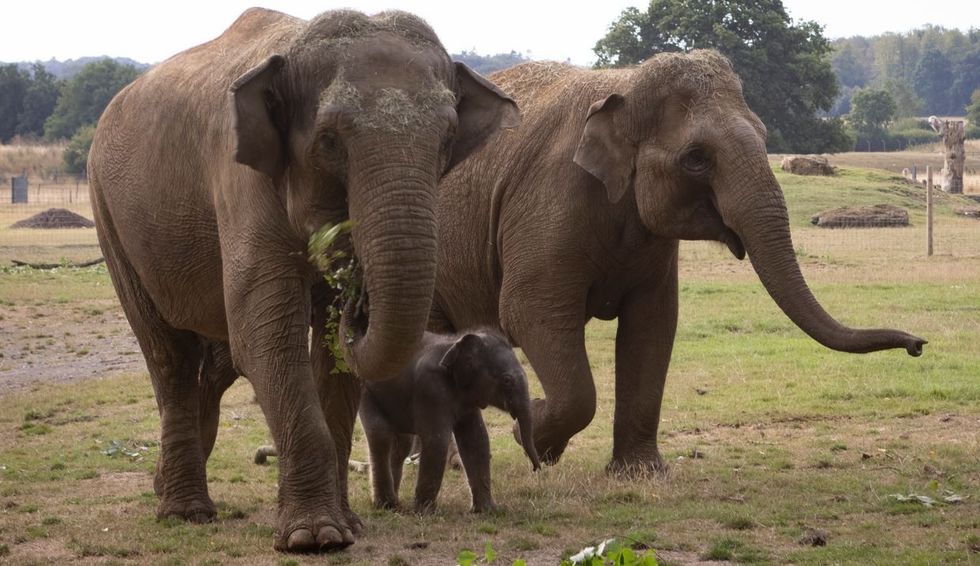A GROWING number of endangered animals from India – including elephants, lions and tigers – are being saved by zoos in Britain.
London Zoo now houses dozens of species from south Asia, such as the gaur, blackbuck, red panda, greater flamingo, greater one-horned rhino and Kerala frog. The site in north London has launched conservation projects to protect the creatures through its international charity, ZSL. Among the initiatives are saving the 600 remaining Asiatic lions in the Gir Forest in Gujarat.
London Zoo’s chief zoological officer, Malcolm Fitzpatrick, said it houses two Asiatic lions, Bhanu and Arya, who were matched as part of the international breeding programme for endangered species. He told Eastern Eye: “The programme aims to create a genetically diverse back-up population of Asiatic lions in case their population numbers plum[1]met and further conservation action is needed to protect them.
“We hope the London Zoo pride will grow soon, to boost Asiatic lion numbers within the programme.
“ZSL has also worked to protect the 600 remaining Asiatic lions in the Gir Forest in the state of Gujarat - part of the species’ last remaining natural habitat - with ZSL conservationists working alongside the Gujarat Forest Department and Wildlife Institute of India to protect the future of these incredible big cats.
“ZSL is also protecting the endangered species in Asia by supporting communities and national park managers in Thailand, Nepal and India with methods to track and predict elephant movements – this will help prevent dangerous encounters, or crop-raiding and reduce human-elephant conflicts.”

Another site protecting at risk species is Whipsnade Zoo in Bedfordshire which has a Centre for Elephant Care - home to a multi-generation herd of six endangered Asian elephants.
Fitzpatrick added: “Our herd contributes directly to the conservation of wild elephants through the advancement of scientific knowledge about the species.
“This includes testing storage methods for dung sampling to support conservationists with faecal DNA testing, sound monitoring to aid understanding of communication, and motion studies and thermal imaging testing to inform technology being developed to better detect elephant movements to protect and conserve them in the wild.
“Only by working collaboratively with communities, governments and conservationists can we stand together to help protect Asian elephants and their habitats.”
London Zoo has close ties with India including an area paying homage to autos and street stalls in Gujarat.
Elsewhere in the UK, Chester Zoo has projects to conserve Asian elephants and has an initiative to reduce conflicts between Bengal tigers and leopards and the human communities in the northern Indian state of Uttar Pradesh.
Chester Zoo, in Cheshire, said: “A significant amount of conflict between humans and big cats arises from predation of livestock, which can harm the livelihoods of people already riding the poverty line.
“Conservation efforts for big cats have seen huge success by protecting forest areas. But these are territorial animals, and an increasing population needs new space. Cats looking for new territories often emerge from the forest and see sugar cane or other crops as grassland, which to them is a perfectly viable habitat.
“In a number of instances, tigresses have also been recorded to have littered and raised young cubs in sugarcane fields of this region. Like in most human-wildlife conflict scenarios, negative interactions with big cats are frequently met with retaliatory killings.”
Jersey Zoo has a project to protect the pygmy hog which was rediscovered in Assam, north-eastern India, in the 1970s and is the world’s smallest pig.
The zoo said: “We are protecting the pygmy hog, and other indicator species like the Bengal florican, through population monitoring and management, captive breeding and release, and habitat management to ensure the survival of all grassland species. We began working with pygmy hogs in the 1970s, and in 1995 formed the Pygmy Hog Conservation Programme.
“We have two pygmy hog captive breeding centres in Assam, from which we have now released over 140 captive bred hogs into four protected grasslands of Assam.”
Meanwhile, Edinburgh Zoo in Scotland’s conservation work includes tigers native to Nepal.






 Kendrick Lamar and SZA commands the stage at Villa Park during his explosive opening setInstagram/
Kendrick Lamar and SZA commands the stage at Villa Park during his explosive opening setInstagram/











 Kap’s Cafe in Surrey was struck by gunfire late at night with staff still insideInstagram/
Kap’s Cafe in Surrey was struck by gunfire late at night with staff still insideInstagram/ Kaps Cafe Instagram Story Instagram Screengrab/
Kaps Cafe Instagram Story Instagram Screengrab/ Kaps Cafe Instagram Story Instagram Screengrab/
Kaps Cafe Instagram Story Instagram Screengrab/